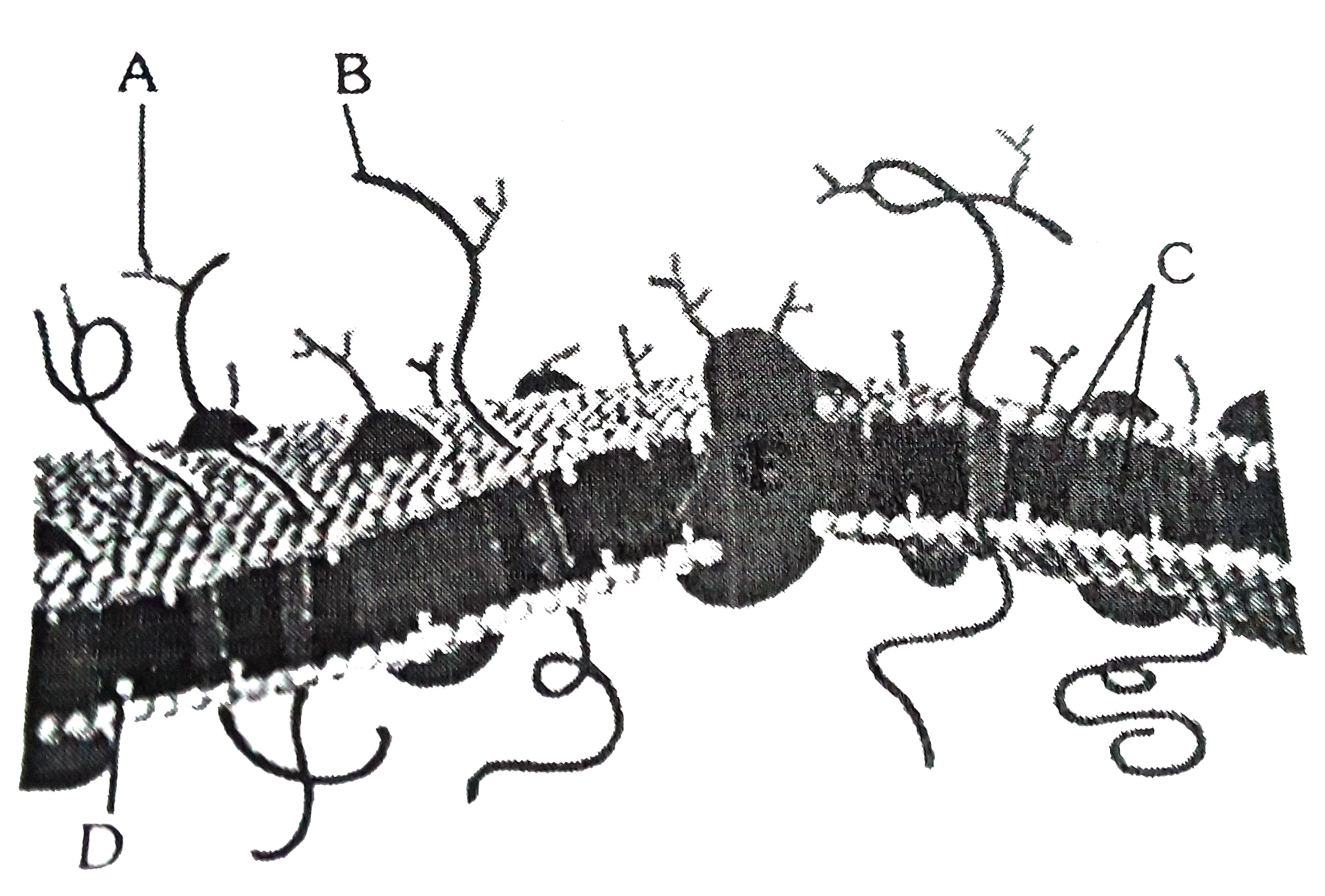Identify the correct combinations
(a) Housefly- labellum - Dutton's membrane
(b) Moth - labellum - Dutton's membrane
(c) Butterfly - first maxillae - galea
(d) Tsetse fly - rostrum - haustellum.
a and b
a and c
b and c
b and d.
The correct Answer is:B
To solve the question of identifying the correct combinations related to the mouthparts of different arthropods, we will analyze each option step by step.
1. Option (a): Housefly - labellum - Dutton's membrane
- The housefly has a sponging type of mouthpart.
- It consists of three main parts: the labellum, rostrum, and haustellum.
- The labellum is indeed present in houseflies and is associated with Dutton's membrane, which is located at the base of the labellum.
- Conclusion: This option is correct.
2. Option (b): Moth - labellum - Dutton's membrane
- Moths do not possess a labellum like houseflies.
- Instead, they have a proboscis that is coiled and does not include Dutton's membrane.
- Conclusion: This option is incorrect.
3. Option (c): Butterfly - first maxillae - galea
- Butterflies have a well-developed proboscis formed by the fusion of the first maxillae.
- The galea is a part of the maxillae and is indeed present in butterflies.
- Conclusion: This option is correct.
4. Option (d): Tsetse fly - rostrum - haustellum
- Tsetse flies have a different type of mouthpart that is adapted for piercing and sucking.
- They do not have a typical rostrum and haustellum like houseflies; instead, they possess a specialized structure for feeding.
- Conclusion: This option is incorrect.
Final Conclusion:
The correct combinations are:
- Option (a): Housefly - labellum - Dutton's membrane (Correct)
- Option (c): Butterfly - first maxillae - galea (Correct)
Thus, the correct answers are options (a) and (c).
- The housefly has a sponging type of mouthpart.
- It consists of three main parts: the labellum, rostrum, and haustellum.
- The labellum is indeed present in houseflies and is associated with Dutton's membrane, which is located at the base of the labellum.
- Conclusion: This option is correct.
- Moths do not possess a labellum like houseflies.
- Instead, they have a proboscis that is coiled and does not include Dutton's membrane.
- Conclusion: This option is incorrect.
- Butterflies have a well-developed proboscis formed by the fusion of the first maxillae.
- The galea is a part of the maxillae and is indeed present in butterflies.
- Conclusion: This option is correct.
- Tsetse flies have a different type of mouthpart that is adapted for piercing and sucking.
- They do not have a typical rostrum and haustellum like houseflies; instead, they possess a specialized structure for feeding.
- Conclusion: This option is incorrect.
The correct combinations are:
- Option (a): Housefly - labellum - Dutton's membrane (Correct)
- Option (c): Butterfly - first maxillae - galea (Correct)
Topper's Solved these Questions
- PHYLUM - ARTHROPODABOOK - DINESH PUBLICATION ENGLISHCHAPTER - PHYLUM - ARTHROPODAEXERCISE - CYG
20 Videos
- PHYLUM - ANNELIDABOOK - DINESH PUBLICATION ENGLISHCHAPTER - PHYLUM - ANNELIDAEXERCISE - Check your grasp
10 Videos
- PLANT BREEDING AND DISEASE CONTROLBOOK - DINESH PUBLICATION ENGLISHCHAPTER - PLANT BREEDING AND DISEASE CONTROLEXERCISE - Check your Grasp
10 Videos
Similar Questions
Identify the correct pairs of combinations
(a) Aspergillus - Meiosis occurs in asci - Produces citric acid
(b) Albugo - Coenocytic hyphae - Parasite on Mustard
( c ) Penicillium - Basidiospores - Multicellular
(d) Colletrichum - Conidia - Smut disease.
View SolutionAcrosome and it's membrane is called :-
(a) Nebenkern
(b) Galea capitis
(c) Germinal vesicle
(d) Manchette
View Solution
Knowledge Check
Identify the parts labelled as A,B,C and D in the given figure and match the correct names from the list (i-viii) given below.

(i)Reissner's membrane , (ii)Basilar membrane
(iii)Tectorial membrane , (iv)Organ of Corti
(v)Hair cellls , (vi)Otolith organ
(vii)Scala media , (viii)Scala vestibuliAABCD(ii)(v)(iii)(i)BABCD(vii)(iv)(ii)(iii)CABCD(vii)(iv)(i)(ii)DABCD(viii)(vi)(i)(iii)Consider the following statements and select the correct option
(A) The endomembrane system includes plasma membrane, ER, Golgi complex, lysosomes and vacuoles
(B) ER helps in the transparent of substances, synthesis of proteins, lipoproteins and glycogen
(C) Ribosomes are involved in protein synthesis
(D) Mitochondria help in oxidative phosphorylation and generation of ATPAB, C and D are correctBA along is correctCB alone is correctDC alone is correct
Identify the structures marked as A, B, C and D w.r.t. Fluid mosaic model of plasma membrane


View SolutionRead the following statements and choose the correct option w r t catecholamines (a) Water soluble hormones which interact with the membrane bound receptors (b) Work through second messenger (c) Binds to external domain of the extracellular receptor present on cell surface (d) They form hormone-receptor complex on the cell surface
View SolutionMatch and find the correct combination
(a) Respiration in bacteria
(b) Respiration in cyanobacteria
(c) Respiration in eukaryotic cells
(d) Mitochondria
(e) Cytoplasmic membrane
(f) Mesosomes.
View SolutionGiven elow is the diagram of plasma membrane. Identify the parts labelled, A,B,C,D & E.

View SolutionSelect the correct sequence of meninges from inside to outside
(a) Duramater → arachnoid membrane → Piamater
(b) Duramater → Piamater → arachnoid membrane
(c) Piamater →arachnoid membrane → duramater
(d) Arachnoid membrane → duramater → piamater
View SolutionIdentify the correct sequence of organs/regions in the organization of human ear as an auditory mechanoreceptor organ.
(a) Pinna-Tympanic membrane -Auditorycanal-Cochlea-Malleus-Incus-Stapes-Auditory nerve
(b) Pinna-Malleus-Incus-Staeps -Auditorycanal-tympanic membrane-Cochles-auditory nerve
(c) Pinna-Auditory canal-Tympanic membrane-Malleus_incus-stapes-cochlea-auditory nerve
(d) Pinna-cochlea-tympanic membrane-auditory membrane-auditory canal-auditory nerve
View Solution
